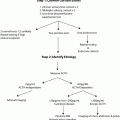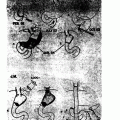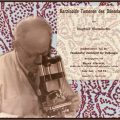(1)
Division of Endocrinology, Diabetes, Metabolism, and Nutrition, Mayo Clinic College of Medicine, 200 First Street SW, 55905 Rochester, MN, USA
Keywords
Primary adrenal failureAddison’s diseaseAdrenal glandsAdrenal cortexAutoimmune polyglandular failureCortisolSkin hyperpigmentation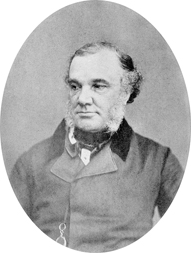
Thomas Addison was a remarkably astute clinician at Guy’s Hospital, who recognized an association between skin hyperpigmentation and diseased adrenal glands at autopsy—he pursued this association and convinced the medical world of the critical role of intact adrenal glands. (Author: H. Watkins, date unknown. Creative Commons Attribution 4.0 International license)
Addison: The Man
Thomas Addison (1793–1860) is recognized for the two conditions that bear his name—Addison’s disease (frequently referred to as primary adrenocortical failure) and Addison’s anemia (now known as pernicious anemia). Addison was born in Newcastle upon Tyne, where he attended the Royal Free Grammar School and excelled in Latin. He entered medical school in 1812 at the University of Edinburgh and graduated in 1815—his M.D. thesis was entitled: “Concerning Syphilis and Mercury” [1]. He moved to London to become a house surgeon at Lock Hospital and a pupil at the Carey Street Public Dispensary, where a dermatologist (Thomas Bateman, 1778–1821) inspired an interest in dermatologic disorders. In 1824, Addison founded the Department of Dermatology at Guy’s Hospital. He obtained his diploma of Licentiate of the Royal College of Physicians (LRCP) in 1819 and in 1827 he was appointed lecturer of Materia Medica. In 1837, Addison was advanced to full physician at Guy’s Hospital. Addison was a brilliant diagnostician and his uniquely coherent lectures were very popular. He was observed to have an uncanny clinical intuition and he was remarkably persistent to seek a unifying diagnosis. Addison recognized the key role for autopsy and correlating the pathology findings with signs and symptoms.
Addison was investigating an atypical anemia and was intrigued by pathological findings in the adrenal glands in some of the patients. On March 15, 1849, Addison delivered a paper before the South London Medical Society, where he was the first to describe pernicious anemia [2]. Six years later, he published his classic monograph: “On the Constitutional and Local Effects of Disease of the Suprarenal Capsule” [3] (Fig. 1). Although Addison’s work was debated in Scotland and England and many were quite skeptical, the syndrome of primary adrenal failure was confirmed by Trousseau in 1856 and he gave it the eponym “Addison’s disease.”
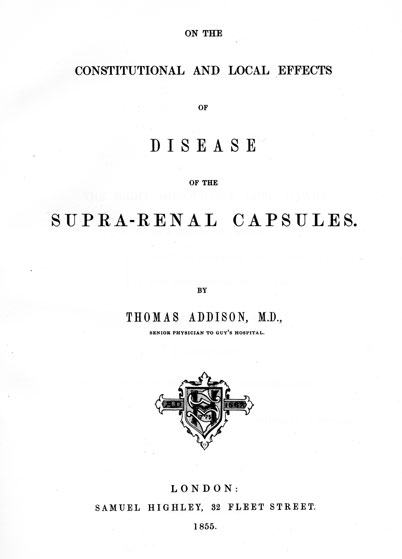

Fig. 1
Title page from Thomas Addison’s classic monograph: [3]. (Used with permission Pickering & Chatto 144–146 New Bond Street, London)
Addison was a bedside diagnostician. Thomas Wilks wrote:
Possessing unusually vigorous perceptive powers, being shrewd and sagacious beyond the average of men, the patient before him was scanned with a penetrating glance from which few diseases could escape detection. He never reasoned from a half discovered fact, but would remain at the bedside with a dogged determination to track out the disease to its very source for a period which often wearied his class and his attendant friends. To those who knew him best his power of searching into the complex framework of the body and dragging the hidden malady to light, appeared unrivalled, but that great object being accomplished, the same energetic power was not devoted to its alleviation or cure. [4]
Addison was described in the medical press [5] as follows:
He is a fine, dashing, big, burly, busting man, proud and pompous as a parish beadle in his robe of office. Dark, and of sallow complexion, an intelligent countenance and noble forehead, he is what the ladies would renounce a fine man. He had mentally and physically a tall idea of himself. Every sentence is polished, is powerful: he prefers the grandiloquent. Slow and studied are his opening sentences, studied the regularity of his intonations. The advantages of his tall and graceful person are artfully employed to add to the favourable impression; his attitudes, tones and manner are studied and systematic.
It was speculated that, in addition to gallstones and jaundice, endogenous depression led to his retirement from medicine in 1860 [6]. In a letter dated March 17, 1860, he wrote to E. Galton, one of his students: “A considerable breakdown in my health has scared me from the anxieties, responsibilities and excitement of my profession, whether temporarily or permanently cannot yet be determined; but whatever may be the issue, be assured that nothing was better calculated to soothe me than the kind interest manifested by the pupils of Guy’s Hospital during the many trying years devoted to that Institution” [6]. Later that year (June 19, 1960), Addison committed suicide. His death was reported in the Brighton Herald of June 30, 1860:
Dr Addison, formerly a physician to Guy’s Hospital, committed suicide by jumping down the area (i.e. the space between the front of the house and the street) of 15 Wellington Villas, where he had for some time been residing, under the care of two attendants, having before attempted self-destruction. He was 72 yrs of age (sic), and laboured under the form of insanity called melancholia, resulting from overwork of the brain. He was walking in the garden with his attendants, when he was summoned in to dinner. He made as if towards the front door, but suddenly threw himself over a dwarf-wall into the area—a distance of nine feet—and, falling on his head, the frontal bone was fractured, and death resulted at one o’clock yesterday morning.
Addison’s Disease: The Monograph
Addison’s monograph (Fig. 1) on disease of the suprarenal capsules [3] is one of the most remarkable medical books of the nineteenth century. The monograph text is 39 pages in length and contains 11 color plates. Written before the invention of color photography, the patient images in the book were drawn by artists. He starts his monograph with: “It will hardly be disputed that at the present moment, the functions of the supra-renal capsules, and the influence they exercise in the general economy, are almost or altogether unknown” [3]. Addison reported the clinical presentations and autopsy findings in 12 patients. He wrote:
The discoloration pervades the whole surface of the body, but is commonly most strongly manifested on the face, neck, superior extremities, penis, scrotum, and in the flexures of the axillae and around the navel…. The leading and characteristic features of the morbid state to which I would direct your attention, are, anaemia, general languor and debility, remarkable feebleness of the heart’s action, irritability of the stomach, and a peculiar change of the colour in the skin, occurring in connexion with a diseased condition of the “supra-renal capsules.” [3]
Addison’s 12 cases are summarized in Table 1 and included 8 men and 4 women, aged from 22 to 60 years, having the clinical manifestations of this disease. The clinical presentations were dominated by recurrent vomiting, skin hyperpigmentation , and weak pulse. The adrenal glands at autopsy showed tuberculosis/infection ( n = 5), metastatic disease ( n = 4), apparent autoimmune disease ( n = 1), probable bilateral adrenal hemorrhage ( n = 1), and unknown ( n = 1). Several cases are particularly instructive.
Table 1




Clinical and autopsy findings in Addison’s 12 cases
Stay updated, free articles. Join our Telegram channel

Full access? Get Clinical Tree





